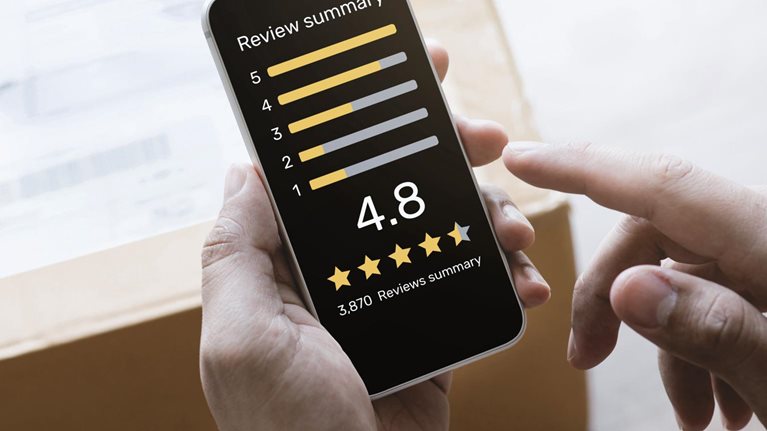Key takeaways
- Around 80 percent of CEOs are looking to marketing to drive growth.
- Data-driven marketing at scale can deliver that growth—consumer-packaged-goods (CPG) companies can deliver 3 to 5 percent growth in net sales and improve marketing efficiency by 10 to 20 percent.
- To do it, CPG companies need an AI engine, a 360-degree view of consumers, and a fit-for-purpose marketing technology stack to deliver the right message, to the right consumer, at the right moment—all the time.
After a year like no other, consumer packaged goods (CPG) marketers face a hard question: how to power above-average growth in the next normal. E-commerce penetration is still 35 percent above pre-COVID-19 levels, and more than one-third of consumers are continuing to switch brands or retailers.1 The challenge is real, and expectations are high: nearly 80 percent of CEOs say they are looking to their marketing leaders to drive revenue growth.
In interviews at major CPG companies around the world, we asked dozens of marketing and growth executives about this new reality. Their answers were clear: fulfilling an ambitious growth mandate requires a marketing agenda that is far more sophisticated, predictive, and customized than ever before. It requires a different playbook with new approaches and tools that few have yet to fully master. While broad reach, powerful, resonant storytelling, and creativity remain critical, marketers now need to utilize data and analytics at scale to crack the code that enables more targeted and engaging interactions to shape consumer behavior.
As one CPG executive said, “We now live in a world of ‘and,’ where we can have both broad reach and customized relevance, using new, granular, data-driven methods to fuel growth.” In fact, two-thirds of CPG companies say they have put data-driven marketing at the top of their agenda.2
Yet many CPG companies have not yet cracked the code for delivering impact at scale from data-driven marketing. Although they may already leverage data analytics and other technology to personalize marketing for various segments or initiatives, these efforts are not sufficiently pervasive to drive sustainable growth. It isn’t enough to optimize a few demographics or key campaigns. Truly sustainable, marketing-led growth has to be granular, focused, and scaled across the entire marketing organization, delivering “the right message to the right consumer, at the right moment, at the right place—all the time.”
Many CPG companies have yet to fully accomplish this, because it requires a difficult step change in how a marketing organization operates. To thrive in this next era of CPG marketing, companies will have to do several things. First, build a continuously updating, AI-powered consumer-intelligence engine that ingests enough signals and data points to not only identify demand but to predict it. Then, use advanced analytics and marketing technology to recommend high-value actions. From there, learnings from hundreds of tests per week need to feed back into this engine, helping drive rapid decision making and informing adjustments to brand plans, spend allocation, tent-pole campaigns, and always-on activation. All this will require new types of marketing talent, additional data and technology capabilities, an organization-wide embrace of a rapid, agile, test-and-learn mentality, and adjustments to the marketing organization operating model in order to reach at-scale impact.
Unlocking demand: Next-level AI consumer intelligence
Creating this kind of modern marketing model is not only possible, it’s now essential for CPG companies that want to successfully capture consumer hearts and minds in a rapidly changing environment. Those that do data-driven marketing at scale well can increase net sales value by 3 to 5 percent and marketing efficiency by 10 to 20 percent. To unlock this impact, we see winning brands using five ingredients (exhibit). Here, we focus on the three that are the most challenging for CPGs.

Macro audiences versus micro-opportunities
CPG companies have traditionally centered their brand strategies around a few broad-based consumer target segments. In today’s fast-moving digital environment, marketers have a staggering amount of highly granular consumer data at their fingertips, although it is not always connected in a way that makes it actionable. Instead of simply targeting as many people as possible in a particular demographic, CPGs now have the capability (and the necessity) to translate a sea of information into more focused and actionable insights. The modern marketer is also able to be more precise than ever about which consumers to target and where to reach them along their life cycle. Scaling this “smart reach” approach widely across marketing initiatives can unlock hidden pockets of growth within thousands of audiences. Instead of suburban moms with two children or young urban professionals, opportunities may lie, for instance, among suburban moms who recently started using delivery platforms like Instacart or who have teenage children, or among urban professionals who live in a certain zip code and buy organic groceries.
Building an AI consumer-intelligence engine
To do granular targeting on a regular basis, companies need to build an advanced analytics engine for generating machine-learning outputs that help them continuously become smarter about the consumer. Building and maintaining this 360-degree view of consumer journeys across channels is now more critical than ever, given Google’s announcement that, by 2023, marketers will no longer be able to use cookies on its Chrome browser—what is being referred to as the “cookie-less future.” Without cookies to easily track consumer activity online, brands will need to find new ways to acquire consumer-facing data.
CPG companies have historically been unable to collect and activate personalized, first-party data at scale because they don’t have direct interactions with consumers the way retailers or digital subscription services like Netflix or Spotify do. For years, they have relied on third-party data to fill this void, but CPG brands must now make clear decisions about their data-acquisition strategy.
Brands that want to reduce their reliance on third-party data will need to decide how much they are going to invest in acquiring “zero-party” data—information that consumers explicitly share with a company—and first-party data, such as purchase information. Much will depend on the types of data already in the company’s ecosystem and the brand’s goals and category dynamics; there is no one-size-fits-all approach. But it will also require offering consumers something of value in return for their data and building trust that this information will be used in secure ways. Sophisticated brands and CPGs have begun to stitch data together from various sources, linking or acquiring not just demographic and psychographic data, but also behavioral identifiers—for example, consumer engagement across media platforms, general consumer sentiment, channel preferences, and sales data.
Would you like to learn more about our Marketing & Sales Practice?
For brands in more commoditized categories, collecting zero-party data isn’t always a viable option. In those cases, CPG companies will likely work with partners that already have large reservoirs of consumer information and rich audience segments to use for targeting, such as retail media networks like Amazon’s AWS Media services, Target’s Roundel, and Walmart Connect.
Regardless of which data strategy a brand chooses, a consumer-intelligence engine will not be built overnight. What’s important is to get started. The first step is to make a complete inventory of existing data sources, which frequently reside in silos across the marketing organization. Marketers are often surprised at the trove of information and extensive measurement capabilities now available from third parties, especially retail media networks.
One food company, for instance, realized that a number of its existing data sets had never been linked together, including information from its call centers and recipe websites. Marketing teams integrated this data into a “consumer 360” engine and added unique consumer IDs, enabling a deeper understanding of consumers and the targeting of microsegments. In an initial test, the company achieved a 40 percent improvement in its return on ad spend by using first-party data to model and target online audiences that looked like its known best consumers.
Consumer-centric and tech-enabled: An effective strategy for data and the tech stack
Over the past five years, there has been an explosion in the number of software tools available to marketers to help them work more efficiently, create smarter content, solidify consumer relationships, and measure their efforts. More than 8,000 solutions are now available in the market, up 125 percent since 2015.3
As noted earlier, building the data foundation for the marketing tech stack (martech) requires a clear and robust data strategy that defines the role of each level of data (zero, first, second, and third party). From there, companies that decide there is enough positive ROI from pursuing a direct connection with consumers should work toward building their own customer-data platform (CDP), which will house complex consumer-data sets and send out relevant messages backed by insights from the intelligence engine. For instance, brands in higher-engagement categories, such as baby and beauty, have collected personalized, zero- and first-party demographic and behavioral data through consumer-loyalty sites that feature coupons, tips, and tools for new moms, or virtual try-on features for cosmetics.
Elsewhere along the tech stack, CMOs and chief growth officers told us they encounter two main friction points. First, when executing digital campaigns, their data activation strategy often fails to strike the right balance between reach and personalization. One solution is to disseminate campaigns widely but use a dynamic creative optimization (DCO) ad-tech solution, which leverages machine learning to choose—in real-time for each consumer—the most relevant set of messages and visual and text components to display.
Second, for the design component of the tech stack, many CPG companies say they lack an adequate digital asset management (DAM) platform. This makes it hard for marketers to easily access every version of the media and creative assets that have been created for a brand. It also inhibits streamlined content creation and management, which makes it difficult to standardize design elements across channels and to quickly and efficiently provide retailers and marketplaces with the specific content they need.
The current generation of these data-driven capabilities makes at-scale custom storytelling and closed-loop measurement a reality, letting marketers measure across channels and formats and understand what’s working, what’s not, and what to do about it.
Instead of approaching technology needs piecemeal, CPG companies should do a holistic assessment of their needs based on a strategic, consumer-centric selection of the most valuable and important use cases. One beauty company, for example, identified its ten most impactful marketing use cases, assessed the respective martech solutions it needed to pursue them, and created a road map of needed investments. From this, the company discovered that a DAM and a single-source product-information-management (PIM) system were necessary elements in a majority of its priority use cases. Marketing leaders prioritized near-term investment in these tools and phased in other key martech solutions over the next 12 to 24 months.

The growth triple play: Creativity, analytics, and purpose
Reaching scale: Aligning the organization for sustainable impact
Much has already been written on how agile practices enable cross-functional marketing teams to test data-backed consumer insights and initiatives and react quickly to learnings. Although many CPG companies are already using digital pods (often referred to as squads or hubs) to do some testing, these teams typically only influence 10 to 15 percent of the overall marketing spend. With agile now considered table stakes—and new challenges presented by a hybrid, virtual working world—the next horizon is how to ensure a solid foundation for cross-functional collaboration that enables companies to scale impact.
Three priority actions can help build the right capabilities and embed new ways of working into a company’s DNA.
1. Set up the infrastructure to measure and scale successful tests
While many companies initiate small pilots and tests throughout the organization, companies that see impact from this new model create a measurement framework, criteria for scaling, and a process to drive it right from the beginning. They conduct their after-action reviews by always asking, “What did we learn, what is the impact, and should we/how can we scale across channels, audiences, brands, and/or geographies?” They are resolute about what key performance indicators (KPIs) to track and what constitutes a successful test. Additionally, they create a forum to bring together the right cross-functional stakeholders (for example, media, e-commerce experts, measurement leads, finance, and agencies) to align on results, the way a test is scaled, and how it will be funded. Even though CPG companies often hesitate to shift funds that are already allocated, scheduled, and solidified by joint business planning, this resistance can be overcome by starting with a small, predetermined budget for tests with the goal of becoming self-funding. As the business ROI case builds, comfort in reallocating dollars will increase. Further measurement of these bigger or additional tests will continue building the business case.
2. Make test-learn-scale the new business-as-usual
Learnings from agile tests cannot remain within a single pod. They must always be set up in a way that supports the business’s objectives. At one CPG, for instance, agile pods each initially had their own agenda, with pod members trying to convince brand teams to implement new learnings about audiences, messages, et cetera. The company decided to revamp the process so that the pods’ agenda aligned closely with the brands’ objectives and became a “lab” to help accelerate their business goals. By essentially embedding brand managers into the pods, the company was able to drive more tests that the brand teams wanted to scale (both in the current year and for future planning). The shift wasn’t easy—brand teams, finance, and even sales had to evolve their planning, resource allocation, and executional processes. But the benefit was significant: more than 25 percent improvement in return on ad spend.
3. Embrace new ways of working
Success in hiring and grooming digitally savvy talent and creating a data-driven culture will help separate the winning CPGs from the laggards. Too often, when CPGs embark on a data-driven marketing and agile-transformation journey, brand managers and other critical leaders aren’t fully invested or haven’t completely bought into new ways of working. For example, they may consider their work with agile pods to be separate from their “day job.” Top-down communication and support for a digital marketing transformation from marketing leaders—such as sharing wins in public forums or companywide communications—can help increase momentum and help others feel and believe in the progress.
Across every dimension, leadership matters. Beyond advocating for cross-functional collaboration, leaders have to also model it. “One of the most important questions leaders should ask themselves in a new data-driven marketing growth world is, Who are you spending time with?” says one former consumer tech CMO. “If the answer is mostly your brand and creative function, you won’t have the deep knowledge of what your data analytics teams need, how to help solve the challenges they face, and how data and creative need to come together to have the biggest impact.”
Planning ahead also makes a difference. The former CMO says the best advice he ever got was. “Chart out your organization a year from now and work backward—and get your direct reports to do the same.” Such advance thinking and planning for roles needed, the kinds of leadership desired, and the structure to put it all in place, he says, is what allows companies to “learn faster than the competition.”
This won’t be an easy transition. Although CPG companies already do bits and pieces of data-driven marketing, the winners will be those that thoughtfully shift their entire marketing organization and successfully deploy all five “ingredients” of modern marketing. But, as one former CMO told us, CPGs that strike the right balances—between creativity and data, between performance-driven marketing and traditional brand building—will “own the future.”


